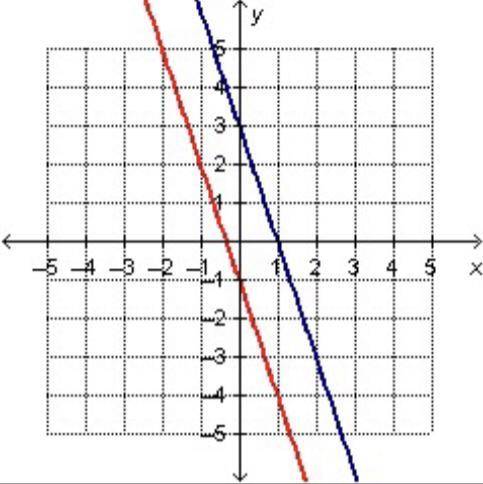Consider the equations and graph below.
y = -3 (x - 1)
y = -3x - 1
Which explains...

Mathematics, 20.01.2021 03:10 miya9946
Consider the equations and graph below.
y = -3 (x - 1)
y = -3x - 1
Which explains why this system has no solution?
Each has a slope of –3 and a y-intercept of –1, which makes the lines parallel.
Each has a slope of –3 and a y-intercept of –1, which makes the lines equivalent.
Each has a slope of –3, but one has a y-intercept of 3 and the other has a y-intercept of –1, which makes the lines parallel.
Each has a slope of –3, but one has a y-intercept of 3 and the other has a y-intercept of –1, which makes the lines equivalent.


Answers: 1


Other questions on the subject: Mathematics

Mathematics, 21.06.2019 16:00, alexandergoetz8239
The level of co2 emissions, f(x), in metric tons, from the town of fairfax x years after they started recording is shown in the table below. x 2 4 6 8 10 f(x) 26,460 29,172.15 32,162.29 35,458.93 39,093.47 select the true statement.
Answers: 1


Mathematics, 21.06.2019 18:30, Prolearner1234
For each polynomial, determine the degree and write the polynomial in descending order. a. –4x^2 – 12 + 11x^4 b. 2x^5 + 14 – 3x^4 + 7x + 3x^3
Answers: 2
You know the right answer?
Questions in other subjects:

Social Studies, 28.09.2019 12:10

Biology, 28.09.2019 12:10

Business, 28.09.2019 12:10

Computers and Technology, 28.09.2019 12:10

Mathematics, 28.09.2019 12:10

Spanish, 28.09.2019 12:10




Health, 28.09.2019 12:10



